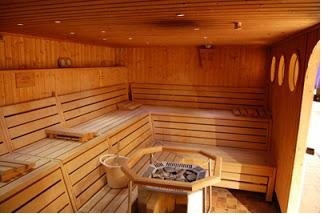Sauna Bathing and Heart Disease

Ref: JAMA Inter Med. 2015; 175(4):542-8
Summary: Sauna bathing in Finnish men lowered cardiovascular outcomes.
Methods:
This was a prospective cohort study done in Finland of 2,315 middle-aged men (aged 42-60 years) over the last 20 years to determine the influence of Sauna Bathing on cardiac outcomes.
Results:
In this study of 2,315 Finnish men, over a median follow-up of 20.7 years, 190 patients had sudden cardiac death, 281 had fatal coronary heart disease, 407 had fatal cardiovascular disease, and 929 all-cause mortality events were recorded. Participants were stratified by frequency of sauna bathing from 1 time per week, to 2-3 times per week, and 4-7 times per week. Outcomes, all statistically significant, are in Table 1.
Table 1:
|
|
1 time per week
|
2-3 times per week
|
4-7 times per week
|
|
Sudden Cardiac Death
|
10%
|
7.8%
|
5.0%
|
|
Fatal CHD events
|
14%
|
11.5%
|
8.5%
|
|
Fatal Cardiovascular Disease
|
23.3%
|
16.4%
|
12%
|
|
All Cause Mortality
|
49.1%
|
37.8%
|
30.8%
|
After adjusting for cardiovascular risk factors compared to men who had sauna once per week, the hazards ratio of sudden cardiac death was 0.78 for those who bathed 2-3 times per week, and 0.37 for those who bathed 4-7 times per week (p = 0.005). Similar associations were found for fatal coronary heart disease, fatal cardiovascular disease, and all cause mortality (PE ≤ 0.005).
Time was also a factor as those who were in the sauna for < 11 minutes had higher risk than those who were in the sauna for sessions lasting > 19 minutes (PE = 0.002). This length of sauna was significant for sudden cardiac death, fatal CHD, and fatal cardiovascular disease, but not for all cause mortality.
Conclusion:
Increased frequency and length of sauna was associated with decreased risks of fatal disease, in particular cardiovascular related diseases, including sudden cardiac death.
Discussion:
Preventing adverse cardiac outcomes, especially those with known cardiac risk factors, continues to be a significant goal for physicians and patients. This study sheds light on a non-pharmacological method that has outcomes that exceed the benefit of aspirin or statins for primary prevention.
How can taking a sauna bath decrease your cardiovascular risk? These authors stipulate that it could be due to vaso-dilation while in the sauna resulting in increased heart rate in a fashion that is similar to low to moderate intensity exercise. In fact, sitting in a sauna may be the equivalent of the aerobic exercise goal we hope and encourage our patients to attempt. Additionally, as Finish saunas are dry, there is increased blood flow to the skin, leading to not only a higher heart rate, but a greater cardiac output as the body’s temperature goes up and the body responds by increasing its sweat production. The authors also theorize that repeated sauna treatment may improve endothelial function, although this has yet to be proven.
What could be the harmful effects of sitting in a sauna bath? These adverse effects are primarily in patients with decompensated cardiovascular disease or hypotension or hypovolemia who may increase the risk of myocardial infarction or acute heart failure. Thus, those who are at risk for orthostatic hypotension should consider a sauna bath carefully. Additionally, the authors remind us that those who use saunas should never combine the event with alcohol.
An interesting confounder of this study is its study population of Finnish men. Genetically they may be less prone to some cardiovascular events compared to other men. Additionally, the traditional Finnish diet may be different than others eat. With centuries of sauna use in their history, these men may have genetically been predisposed to finding health benefits that others do not find. It could be the mental health benefits of sauna may also lead to lower stress which may attenuate the sympathetic response of a stressor, which could possibly also decrease cardiovascular risk
Whatever the reason, this study is highly encouraging if the authors’ suggestion that sitting in a dry sauna is the equivalent to a form of aerobic exercise that provides cardiovascular benefit. It may evolve into a popular way for those disinclined to exercise to get reasonable cardiovascular stressing while not being active. Until further data is available, for those who are financially able and interested, encourage 4-7 nineteen minute episodes of dry sauna bathing for men with multiple cardiac risk factors.